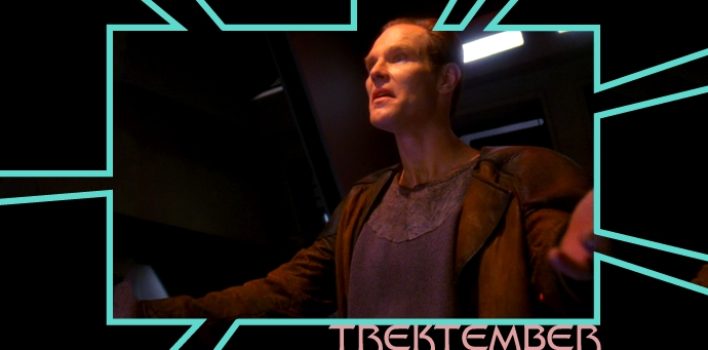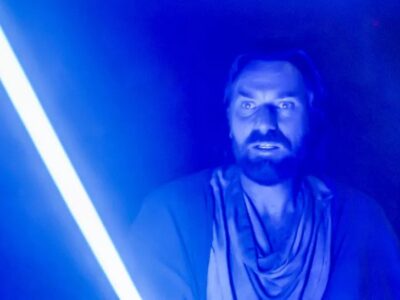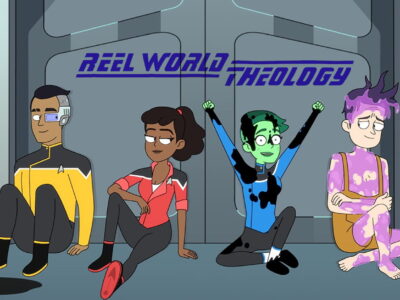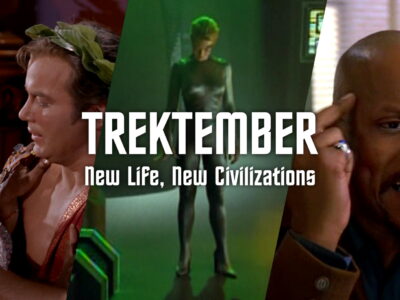Trektember: For the Uniform
Think about the clothes you wear each day. Do they define you? Or are they just one part of you out of many? Unless you’re Derek Zoolander flashing blue steel at every passerby, I’m guessing you’d say the latter. Certainly, you’d hope that they at least weren’t cause for someone to war against you. And yet, if you wore a uniform each day that represented an ideal, a symbol of your pledge to a federation, that’s exactly what you may find.
Wait, does this mean the seemingly spotless and morally-mighty United Federation of Planets has done something worth warring against? A group called the Maquis seemed to think so. Part of Star Trek: Deep Space Nine’s thorough exploration of the blurry lines of allegiance and war time motivations, the Maquis were perhaps the most personal examination of the Federation’s flaws and failures. This was in a series set amidst the Dominion War and the Caradassian occupation of Bajor, so that’s saying something. And for this story, the group’s actions were largely represented through their de facto leader, Michael Eddington.
What’s in a Uniform?
In “For the Uniform” we find Sisko following his obsession to capture Eddington, who worked under him on DS9 for a long period before betraying him and Starfleet for the Maquis. It’s a fantastic culmination of two seasons of storytelling, and a great payoff from a stunning twist in the episode “For the Cause.” Eddington seems to have gotten the better of Sisko at every turn, remaining several steps ahead no matter what Sisko and the crew of the Defiant throw at him. As Eddington carries out a devastating attack on a Cardassian colony, with promises of similar attacks to come, Sisko realizes he must act out of character (read: out of uniform) in order to stop him.
But what does that mean exactly? What does a Starfleet uniform represent? Here we have Eddington proving that an entire group of people feels wronged by the Federation, displaced by Starfleet’s best intentions, to the point that they’re willing to attack and kill another race of people they hate. This makes them the villains, right? I mean, they’re often referred to as terrorists by Starfleet; and, as Sisko emphatically reminds Eddington, he “betrayed his uniform.” But did he? Let’s see what one of the greatest Captains to wear the uniform has to say about it.
Jean-Luc Picard: The first duty of every Starfleet officer is to the truth, whether it’s scientific truth or historical truth or personal truth. It is the guiding principle on which Starfleet is based. And if you can’t find it within yourself to stand up and tell the truth about what happened, you don’t deserve to wear that uniform!
Picard, speaking to cadet Wesley Crusher in the fantastic Next Generation episode “The First Duty,” lays it all out for us (in an exceptionally articulated monologue, mind you): the Starfleet uniform represents a duty to the truth. Isn’t that what Michael Eddington is after? His duty is to his truth, both personal and historical. So, even as he abandons his Starfleet uniform, he fulfills the duty required from it. The problem, obviously, is how he does that.
Let’s look at Captain Sisko. He’s fulfilling his duty to the uniform by attempting to bring a traitor and war criminal to justice. No problem there, right? Almost. The lengths he goes to in order bring about justice makes one wonder what lengths are acceptable to to the uniform. The episode gives us no answers to this query, as we simply see what drives these two men on display. For all their right intentions, their actions reveal their true natures.
Sisko: Les Misérables isn’t about the policeman. It’s about Valjean—the victim of a monstrous injustice, who spends his entire life helping people, making noble sacrifices for others. That’s how Eddington sees himself: he is Valjean, he’s Robin Hood, he’s a romantic, dashing figure, fighting the good fight against insurmountable odds.
Sisko’s conclusion is that in order to beat Eddington, he must play the role of a villain; fulfilling Eddington’s fantasy that he is a Valjean of sorts, on a Robin Hood-like quest to rob from the rich and give to the poor. But we see in each circumstance how Sisko and Eddington are neither hero nor villain. They both use a weapon to displace a people group, they both go beyond the moral boundaries set by their “uniform” or ideology to one-up each other. They are each other’s antagonist; and by being so, we see in them the capability of the human heart.
There is No Such Thing as a Villain
Literature has antagonists and protagonists and is rich with stories of villainous foes being thwarted by heroes of all sorts. But in reality, there are no villains. For if there are, then we must all be villains in some respect. No, there is simply mankind, and the evil that lurks within our hearts. There is sin, run rampant on our world, causing pain and death and yes, villainy. But let us be warned before we start reducing one another to being nothing but villains.
We are all image bearers of God. He made us in his image. And no matter how much evil may poison one’s heart, no one should be reduced to the sum of their actions. Yet how often do we sit in our armchairs and make villains out of others we disagree with? How often do we draw lines and declare superiority over those on the other side? Too often. And when we miss seeing someone as an image bearer, we miss out on seeking God’s perfect justice for our world.
I love that “For the Uniform” doesn’t leave us with any semblance of perfect justice. Sisko isn’t made out to be this conquering hero returning from a hard-won battle. Jadzia even gloats in the episode’s final line that the “bad guy” won. Sisko seems relieved that Eddington has been captured, but still burdened by what it took to take him. There is a bit of a happy conclusion as it is revealed that balance was restored in the region by the resettlement of both the Cardassian and Maquis colonies. But do the ends justify the means? Was the uniform betrayed or was its duty to truth fulfilled?
Perhaps it’s an area as grey as the shoulders of a DS9-era Starfleet uniform. But I don’t believe that God’s perfect justice allows for sin to be let off the hook. Nor do the writers of DS9, who further explore these ideas in great episodes like “In the Pale Moonlight,” where these same motives of Sisko are truly laid bare, and people suffer for it. Thank God for his grace that sets us free from sin. It doesn’t define who we are any more than the khaki pants I wear to work define me. Sometimes, though, and especially here for Sisko, it does make the uniform feel a lot less comfortable.







